UV LED Market Size
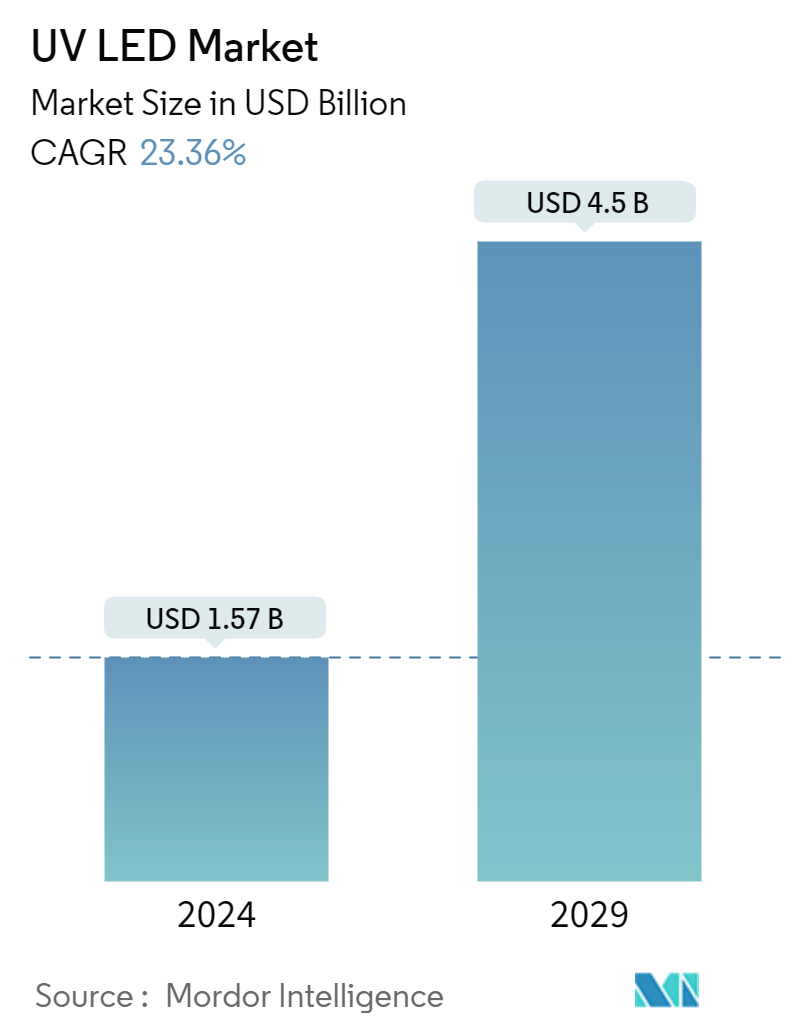
| Study Period | 2019 - 2029 |
| Market Size (2024) | USD 1.57 Billion |
| Market Size (2029) | USD 4.5 Billion |
| CAGR (2024 - 2029) | 23.36 % |
| Fastest Growing Market | Asia Pacific |
| Largest Market | Asia Pacific |
Major Players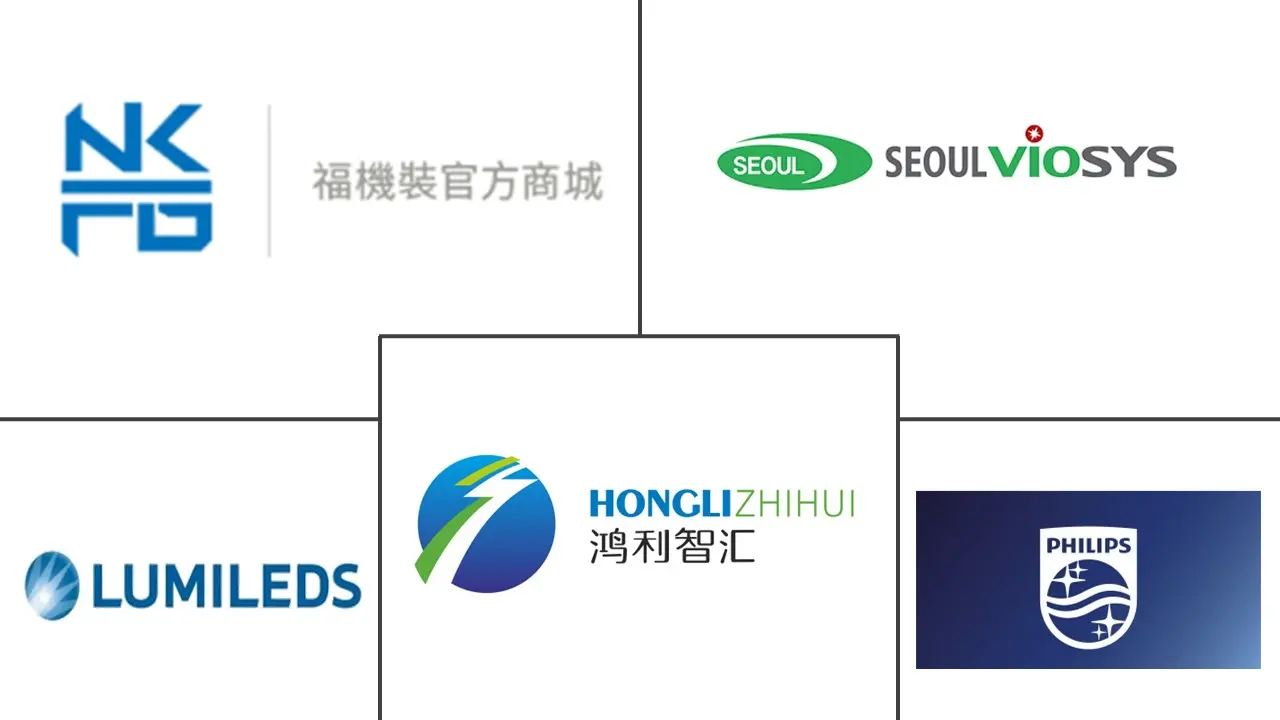
*Disclaimer: Major Players sorted in no particular order |
Need a report that reflects how COVID-19 has impacted this market and its growth?
UV LED Market Analysis
The UV LED Market size is estimated at USD 1.57 billion in 2024, and is expected to reach USD 4.5 billion by 2029, growing at a CAGR of 23.36% during the forecast period (2024-2029).
The growing demand for UV LEDs across different applications and increasing efforts made by vendors to enhance the technology further, giving rise to new use cases, are anticipated to support the growth of the market studied during the forecast period.
In recent years, the adoption of LEDs has grown significantly in applications wherein UV lamps (mercury, excimer, xenon, amalgam, etc.) have operated for decades. Recent technological improvements in the flux density, stability, and operating hours of UV-LEDs have also made them an efficient solution for replacing traditional UV light sources such as arch lamps, hot and cold cathode lamps, mercury arc lamps, and grid lamps. Moreover, the fact that UV LEDs are more environmentally friendly, as they do not use harmful mercury, consume less energy, and do not produce ozone, also supports its adoption across various applications.
In optoelectronics, UV LEDs consist of approximately 200 nm to 400 nm products with various package styles, including surface mount, through-hole, and COB (chip-on-board). There are many unique applications for UV LEDs. However, the application cases of these LEDs are greatly dependent on the output power and wavelength.
In the last decade, the prominence of LED technology has grown significantly, driven by increasing consumer acceptance and technological innovations. For instance, according to estimates by the European Commission's Joint Research Center and the International Energy Agency (IEA), the penetration of LEDs in the lighting industry is estimated to grow to 87.4% by 2030, from just 1.8% in 2012. Such trends are anticipated to drive the awareness and acceptance of LED technology, creating a favorable outlook for the market studied.
However, factors such as the higher cost of UV LEDs and the negative impact of UV light on users' health are significant challenges for the market's growth. Furthermore, lower efficiency and issues related to the reliability of UV LEDs may challenge the growth of the market studied.
With the outbreak of COVID-19, the global UV LED market witnessed a significant growth in demand due to its effectiveness in disinfecting surfaces and germ-killing properties. The healthcare sector received a significant boost post-pandemic, which is anticipated to drive the demand for advanced solutions for sterilization and disinfection applications.
UV LED Market Trends
UV-C LED to Hold Major Market Share
- The global focus on hygiene, especially in healthcare, hospitality, and public spaces industries, has increased the demand for UV-C LED-based solutions. These LEDs provide numerous benefits, such as shorter disinfection times, decreased chemical usage, and the absence of harmful byproducts. Moreover, advancements in UV-C LED technology have resulted in improved efficiency, longer lifespan, and greater affordability.
- Manufacturers are currently dedicating resources to research and development to improve the efficiency of UV-C LEDs, making them more convenient and applicable for various uses. Consequently, the UV-C sector is anticipated to experience considerable expansion, presenting valuable opportunities for UV LED module manufacturers, component providers, and system integrators. The growing understanding of the significance of disinfection and the benefits of UV-C LEDs is projected to drive a substantial increase in market growth.
- UV-C LED modules can help generate UV-C light in systems where air and water circulate. Some critical factors advancing the growth of UV-C LED modules include the rapid expansion of the use of environment-safe LEDs and the increase in the application of UV curing systems. Since UV-C LED is practical for disinfection, a surge in the adoption of water purification is a significant factor driving the growth of the UV-C LED industry.
- Furthermore, it is expected that the integration of UV-C LED technology into consumer products and household appliances will create a valuable opportunity to expand the UV-C LED market during the forecast period. Moreover, advancements in output power and reliability and the recent decrease in unit cost prices for UV-C LEDs are significantly driving the market’s growth.
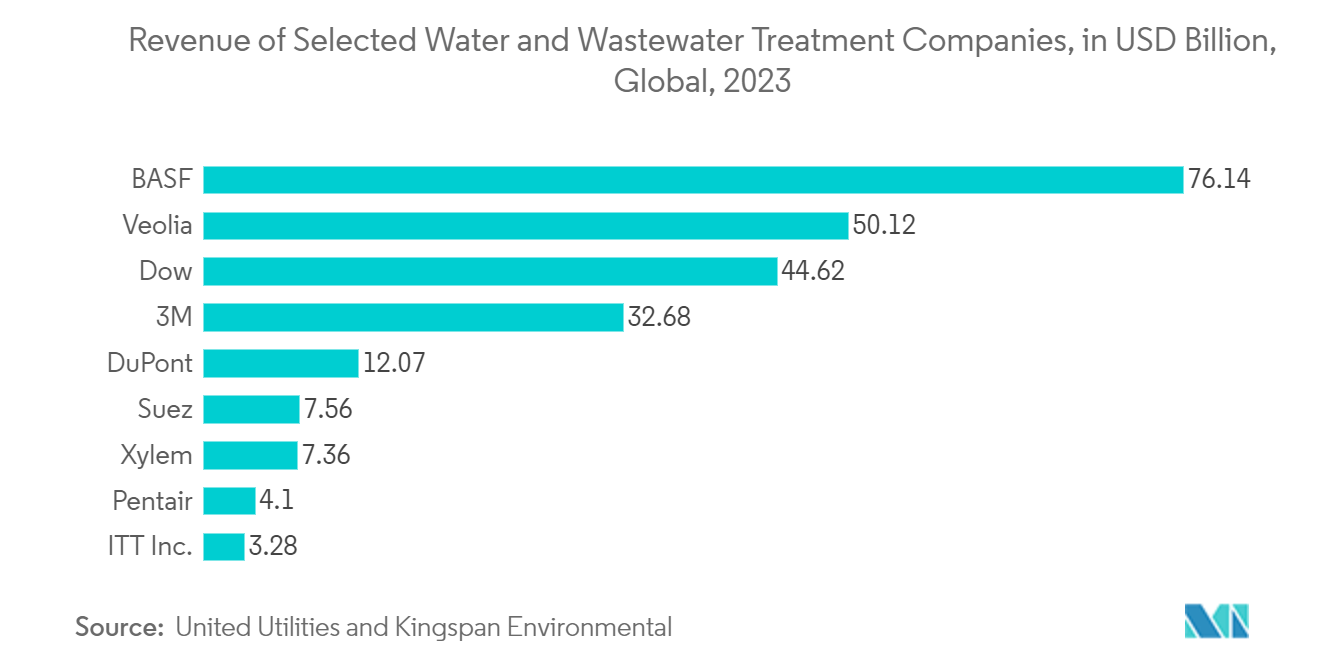
Asia-Pacific Expected to Witness Significant Growth
- The increasing use of UV LED technology in the UV curing process is driving the market’s growth. The UV curing process is preferred over traditional drying, as the results are much better, rejection rates are low, and the entire process enhances the solvency and scratch resistance of the product.
- UV LED is helpful in curing purposes in the coating industries, as it is more energy-efficient, loses very little heat, contains no mercury, can be manufactured with a much smaller footprint, and has a far better optical design than traditional UV lamps. The use of UV-curable adhesives in the packaging industry is growing tremendously in the country, owing to their advantages over conventional adhesive systems.
- The Japanese automotive industry is one of the most prominent and largest industries in the world. Japan is one of the top three countries with the highest number of cars manufactured since the 1960s. The country is home to some of the major automotive players, such as Toyota, Suzuki, and Honda. These companies have an extensive presence in the country, along with their service centers. The growing application of UV curing in the automotive industry is expected to offer opportunities in the country and augment the market’s growth.
- South Korea is known for its thriving electronics manufacturing industry. UV LEDs are used extensively in electronics manufacturing processes such as UV curing adhesives, coatings, and inks. As the electronics industry continues to grow, the demand for UV LEDs in manufacturing is expected to increase.
- The Rest of Asia-Pacific includes Taiwan, India, and Singapore. The companies in Singapore are developing new products or incorporating features in the existing products to meet the demand of the end users and increase their market shares.
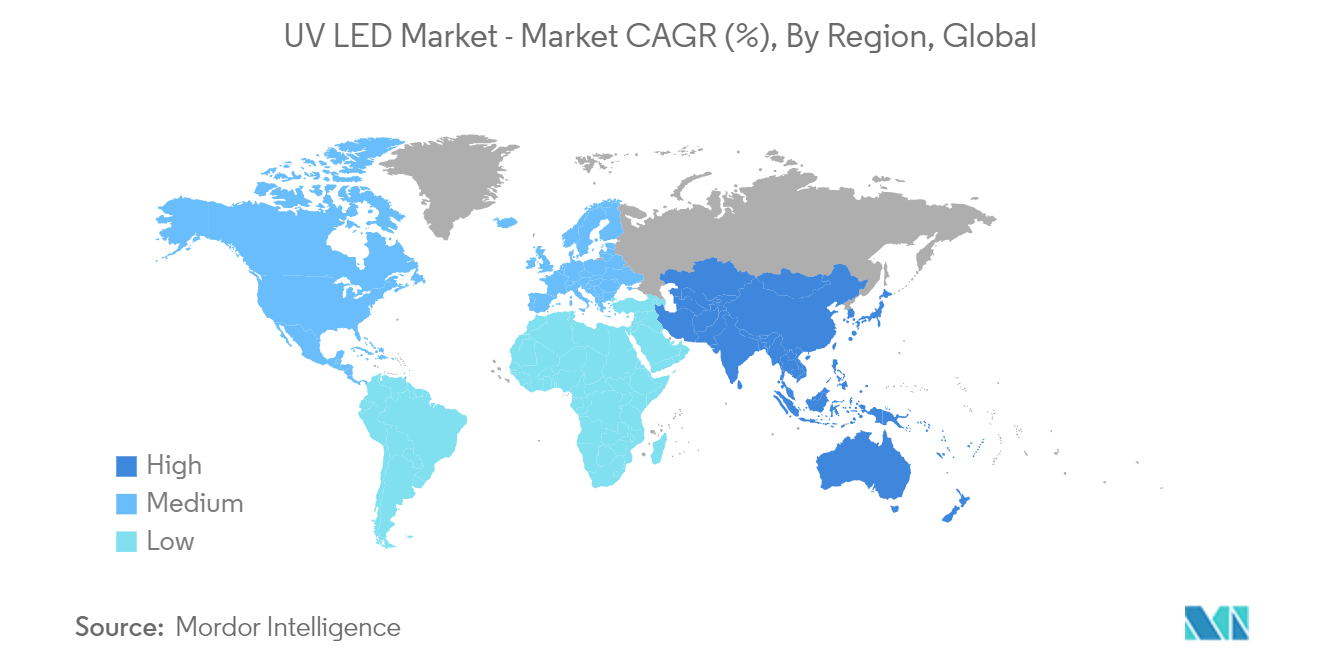
UV LED Industry Overview
The UV LED market is highly fragmented with the presence of major players like Lumileds Holding BV, Koninklijke Philips NV, NKFG Corporation, Hongli Zhihui Group, and Seoul Viosys Co. Ltd. Players in the market are adopting strategies such as partnerships and acquisitions to enhance their product offerings and gain sustainable competitive advantage.
- In March 2024, Nichia started mass production of the new UV-B (308 nm) and UV-A (330 nm) LEDs in its popular 434 series package. While maintaining the compact 3.5 mm x 3.5 mm size of the 434 series, the newly launched UV-B and UV-A LEDs deliver industry-leading outputs of 90 and 100 mW, respectively (at 350 mA), thus maximizing flux density.
- In November 2023, Crystal IS Inc. announced that Amway had chosen its UVC LED technology for its eSpring home water treatment system. With a unique combination of UV LEDs and eSpring e3 carbon filter, the new eSpring water purifier is 99.9999% effective at killing bacteria, viruses up to 99.99%, and cysts up to 99.9%. The use of UV C LEDs also makes the new eSpring water purifier a more environmentally friendly product, as the new device consumes 25% less energy during active use compared to the previous model.
UV LED Market Leaders
Lumileds Holding BV
Koninklijke Philips NV
NKFG Corporation
Hongli Zhihui Group
Seoul Viosys Co. Ltd
*Disclaimer: Major Players sorted in no particular order
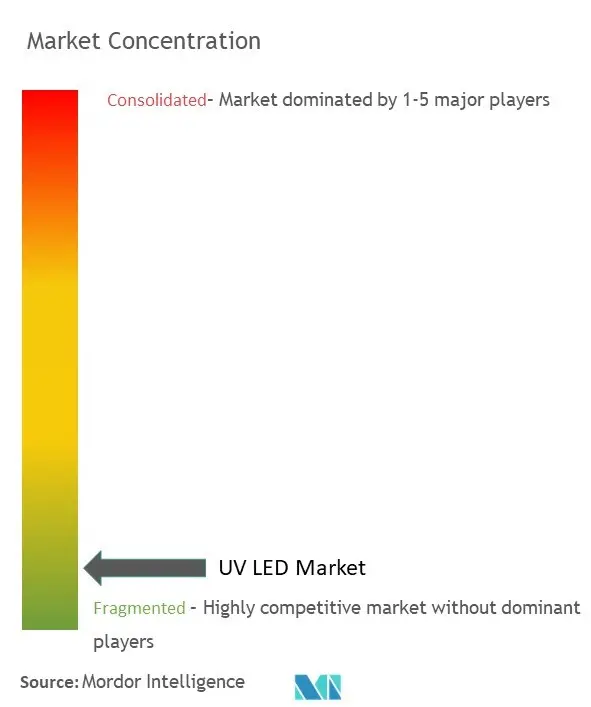
UV LED Market News
- December 2023: Luminus announced the official launch of its Gen2 XBT-3535 series, an addition to its extensive UV-C LED portfolio. This release ensures that Luminus is a prominent player with one of the most comprehensive portfolios in the industry. It offers multiple wavelength options, including 265 nm, 275 nm, 285 nm, 308 nm, and 340 nm.
- November 2023: Crystal IS Inc. announced that Amway chose its UVC LED technology for its eSpring home water treatment system. With a unique combination of UV LEDs and eSpring e3 carbon filter, the new eSpring water purifier is 99.9999% effective at killing bacteria, viruses up to 99.99%, and cysts up to 99.9%. The use of UV C LEDs also makes the new eSpring water purifier a more environmentally friendly product, as the new device consumes 25% less energy during active use compared to the previous model.
Ultravoilet (UV) LED Market Report - Table of Contents
1. INTRODUCTION
1.1 Study Assumption and Market Definition
1.2 Scope of the Study
2. RESEARCH METHODOLOGY
3. EXECUTIVE SUMMARY
4. MARKET INSIGHTS
4.1 Market Overview
4.2 Industry Attractiveness - Porter's Five Forces Analysis
4.2.1 Bargaining Power of Suppliers
4.2.2 Bargaining Power of Buyers
4.2.3 Threat of New Entrants
4.2.4 Threat of Substitutes
4.2.5 Intensity of Competitive Rivalry
4.3 Impact of COVID-19, After Effects, and Other Macroeconomic Factors
5. MARKET DYNAMICS
5.1 Market Drivers
5.1.1 Eco-friendly Composition of UV LED
5.1.2 Rising Adoption of the UV Curing Market
5.1.3 Increasing Adaptability Fueled by Low Total Cost of Ownership
5.2 Market Restraints
5.2.1 Increasing Manufacturing Complexity and Technical Limitations
6. MARKET SEGMENTATION
6.1 By Technology
6.1.1 UV-A
6.1.2 UV-B
6.1.3 UV-C
6.2 By Application
6.2.1 Optical Sensors and Instrumentation
6.2.2 Counterfeit Detection
6.2.3 Sterilization
6.2.4 UV Curing
6.2.5 Medical Light Therapy
6.2.6 Other Applications
6.3 By Geography***
6.3.1 North America
6.3.1.1 United States
6.3.1.2 Canada
6.3.2 Europe
6.3.2.1 Germany
6.3.2.2 United Kingdom
6.3.2.3 France
6.3.3 Asia-Pacific
6.3.3.1 China
6.3.3.2 Japan
6.3.3.3 South Korea
6.3.3.4 Australia and New Zealand
6.3.4 Latin America
6.3.4.1 Brazil
6.3.4.2 Chile
6.3.4.3 Mexico
6.3.5 Middle East and Africa
6.3.5.1 United Arab Emirates
6.3.5.2 South Africa
7. COMPETITIVE LANDSCAPE
7.1 Company Profiles*
7.1.1 Lumileds Holding BV
7.1.2 Koninklijke Philips NV
7.1.3 NKFG Corporation
7.1.4 Hongli Zhihui Group
7.1.5 Seoul Viosys Co. Ltd
7.1.6 Nichia Corporation
7.1.7 Semileds Corporation
7.1.8 EPIGAP OSA Photonics GmbH
7.1.9 CRYSTAL IS Inc. (Asahi Kasei Corporation)
7.1.10 Luminus Inc.
7.1.11 LITE-ON Technology Corporation
8. INVESTMENT ANALYSIS
9. MARKET OPPORTUNITIES AND FUTURE TRENDS
UV LED Industry Segmentation
The market is defined by the revenue accrued from the sales of UV LEDs by various vendors globally. UV LED (ultraviolet light-emitting diode) is a device that emits ultraviolet light or waves with a wavelength of less than 400 nm and is renowned for its compact size, high performance, and low cost. UV LED technology has evolved and witnessed tremendous growth, owing to its increasing applications in curing, purification, and medical fields, such as skin treatment, medical devices, disinfection areas, printing, and the gemological field.
The UV LED market is segmented by technology (UV-A, UV-B, and UV-C), application (optical sensor and instrumentation, counterfeit detection, sterilization, UV curing, medical light therapy, and other applications), and geography (North America [United States and Canada], Europe [Germany, United Kingdom, and France], Asia-Pacific (China, Japan, South Korea, Australia, and New Zealand), Latin America (Brazil, Chile, and Mexico) and Middle East and Africa (United Arab Emirates and South Africa). The report offers market forecasts and size in value (USD) for all the above segments.
| By Technology | |
| UV-A | |
| UV-B | |
| UV-C |
| By Application | |
| Optical Sensors and Instrumentation | |
| Counterfeit Detection | |
| Sterilization | |
| UV Curing | |
| Medical Light Therapy | |
| Other Applications |
| By Geography*** | ||||||
| ||||||
| ||||||
| ||||||
| ||||||
|
Ultravoilet (UV) LED Market Research FAQs
How big is the UV LED Market?
The UV LED Market size is expected to reach USD 1.57 billion in 2024 and grow at a CAGR of 23.36% to reach USD 4.5 billion by 2029.
What is the current UV LED Market size?
In 2024, the UV LED Market size is expected to reach USD 1.57 billion.
Who are the key players in UV LED Market?
Lumileds Holding BV, Koninklijke Philips NV, NKFG Corporation, Hongli Zhihui Group and Seoul Viosys Co. Ltd are the major companies operating in the UV LED Market.
Which is the fastest growing region in UV LED Market?
Asia Pacific is estimated to grow at the highest CAGR over the forecast period (2024-2029).
Which region has the biggest share in UV LED Market?
In 2024, the Asia Pacific accounts for the largest market share in UV LED Market.
What years does this UV LED Market cover, and what was the market size in 2023?
In 2023, the UV LED Market size was estimated at USD 1.20 billion. The report covers the UV LED Market historical market size for years: 2019, 2020, 2021, 2022 and 2023. The report also forecasts the UV LED Market size for years: 2024, 2025, 2026, 2027, 2028 and 2029.
UV LED Industry Report
Statistics for the 2024 UV LED market share, size and revenue growth rate, created by Mordor Intelligence™ Industry Reports. UV LED analysis includes a market forecast outlook to 2029 and historical overview. Get a sample of this industry analysis as a free report PDF download.
